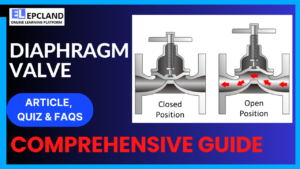Introduction
When it comes to project management and contract agreements, the Lump Sum Turnkey (LSTK) Contract stands as a crucial framework that significantly impacts project delivery. In this article, we’ll delve into the ins and outs of the Lump Sum Turnkey Contract, highlighting its key features, benefits, challenges, and the role it plays in ensuring successful project execution. Whether you’re a seasoned professional or a newcomer in the field, understanding the nuances of the LSTK Contract can greatly contribute to your project management toolkit.
Table of Contents
Lump Sum Turnkey (LSTK) Contract: An Overview
The Lump Sum Turnkey (LSTK) Contract, often referred to as the Fixed Price Turnkey Contract, is a project agreement where the contractor undertakes the entire scope of work at a fixed price. This means that the client provides a detailed project scope, and the contractor assumes full responsibility for project completion, from design and procurement to construction and commissioning. This arrangement offers several advantages:
- Cost Certainty: The fixed price nature of the LSTK Contract provides clients with cost predictability, as they know the exact amount they need to budget for the project.
- Single Point of Responsibility: With the contractor taking charge of the entire project, there’s a single point of contact, streamlining communication and decision-making.
- Reduced Client Risk: As the contractor assumes the risk for any cost overruns or delays, clients can focus on other aspects of their business without worrying about project management.
Don’t miss the Complete Course on Piping Engineering: Check Now
By EPCLand.com
Benefits of Lump Sum Turnkey (LSTK) Contract
The LSTK Contract brings forth a plethora of benefits for both clients and contractors:
- Clear Budgeting: The fixed price arrangement facilitates accurate budgeting and financial planning for clients, eliminating unexpected cost escalations.
- Time Efficiency: Contractors are incentivized to complete projects on time to avoid additional costs, ensuring timely project delivery.
- Streamlined Communication: With a single point of contact, communication between the client and the contractor becomes more efficient, reducing the chances of miscommunication.
- Quality Assurance: Contractors are driven to maintain high-quality work to avoid rework expenses, leading to better project outcomes.
Key Considerations and Challenges
While the LSTK Contract offers numerous advantages, it’s important to acknowledge potential challenges:
- Scope Changes: Changes to the project scope can be challenging to manage within the fixed price framework. These changes may lead to additional costs and project delays.
- Risk Allocation: Properly allocating risks between the client and the contractor is crucial. Any oversight can lead to disputes and delays.
- Design Complexity: Complex projects with intricate designs may face challenges during the construction phase, potentially affecting the project timeline.
Ensuring Success with Lump Sum Turnkey (LSTK) Contract
To maximize the benefits of the LSTK Contract, consider these strategies:
- Thorough Scope Definition: Clearly define the project scope to minimize the likelihood of scope changes that could disrupt the project’s flow.
- Comprehensive Risk Assessment: Identify and allocate potential risks early on to prevent disputes and maintain a smooth project trajectory.
- Robust Communication: Maintain open and transparent communication between the client and the contractor to address any issues promptly.
FAQ’s
Q: What is the primary characteristic of the LSTK Contract?
The Lump Sum Turnkey (LSTK) Contract is characterized by a fixed price arrangement where the contractor assumes full responsibility for project completion.
Q: How does the LSTK Contract benefit clients?
Clients benefit from cost certainty, streamlined communication, reduced risk, and high-quality outcomes.
Q: What challenges can arise with the LSTK Contract?
Challenges include managing scope changes, proper risk allocation, and addressing complexities in project design.
Q: What is the role of the contractor in the LSTK Contract?
The contractor takes on the entire scope of work, from design to commissioning, while ensuring on-time and on-budget delivery.
Q: How can clients ensure success with the LSTK Contract?
Thorough scope definition, comprehensive risk assessment, and effective communication are key strategies for success.
Q: Can changes to the project scope be accommodated in the LSTK Contract?
While possible, accommodating scope changes may lead to additional costs and project delays.
Conclusion
In the realm of project management, the Lump Sum Turnkey (LSTK) Contract shines as a reliable framework that promotes cost certainty, efficient communication, and successful project delivery. By embracing its benefits, understanding its challenges, and implementing best practices, both clients and contractors can navigate the complexities of project execution with confidence. So, whether you’re embarking on a new project or seeking to enhance your project management expertise, the LSTK Contract is a cornerstone worth exploring.
Recommended courses (Published on EPCLand):
- Basics of Piping Engineering
- Piping Layout Engineering
- Piping Material Engineering
- Piping Stress Analysis
- Complete Course on Piping Engineering
- Material Requisitions
- Piping Material Specifications
- Valve Material Specifications
Related Video
Attempt Quiz
Question 1:
What does LSTK stand for in the context of project contracts?
Explanation: LSTK stands for Lump Sum Turnkey, which is a type of project contract where a contractor is responsible for delivering a project on a fixed budget and schedule, assuming all risks.
Question 2:
What is the main characteristic of an LSTK contract?
Explanation: The main characteristic of an LSTK contract is that the contractor assumes full responsibility for the delivery of the project, including design, construction, and performance, within a fixed budget and schedule.
Question 3:
What is the role of the client in an LSTK contract?
Explanation: In an LSTK contract, the client provides funding for the project and oversees its progress, but the contractor is responsible for the design, construction, and project delivery.
Question 4:
What is the advantage of an LSTK contract for the client?
Explanation: An advantage of an LSTK contract for the client is reduced project risks and uncertainties, as the contractor assumes responsibility for project delivery and cost overruns.
Question 5:
What is the typical type of project suitable for an LSTK contract?
Explanation: Large-scale public infrastructure projects, such as highways, power plants, and industrial facilities, are typical examples of projects suitable for an LSTK contract due to their complexity and scale.



